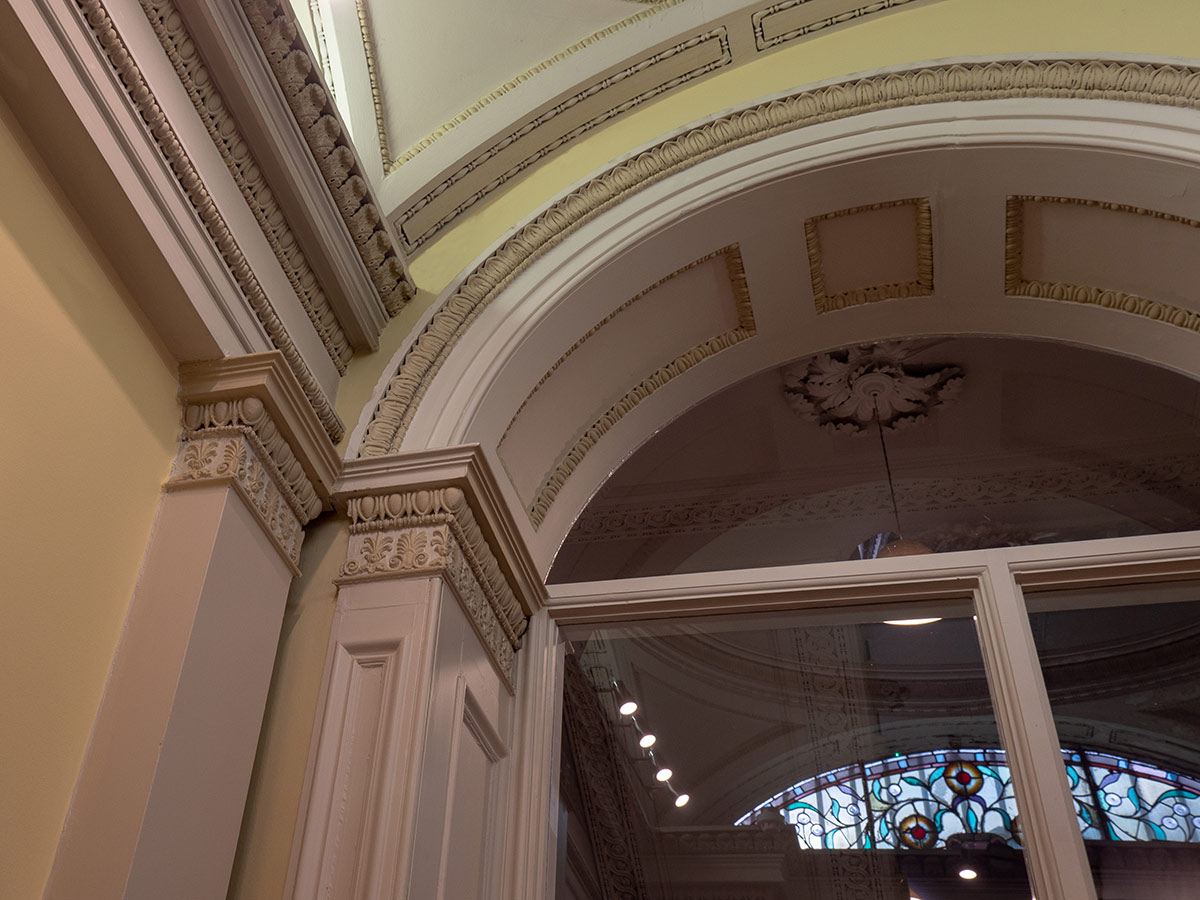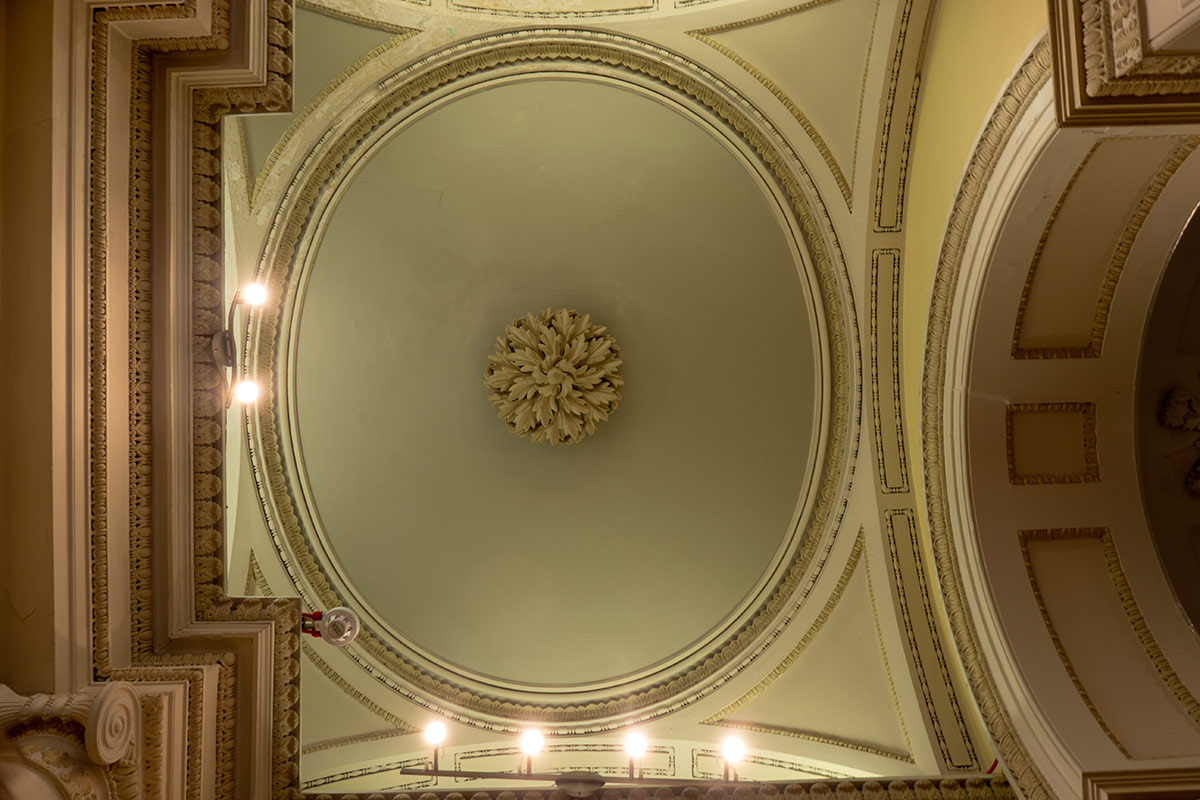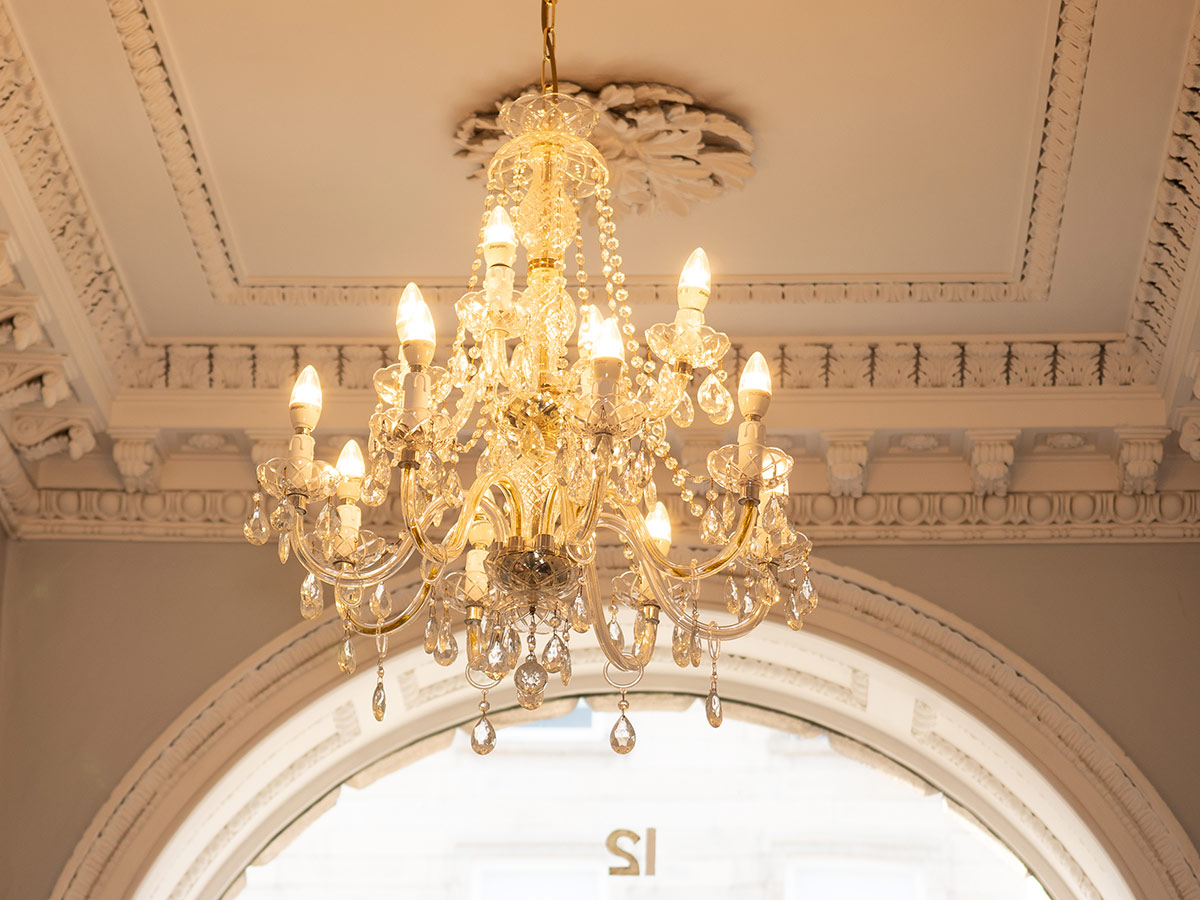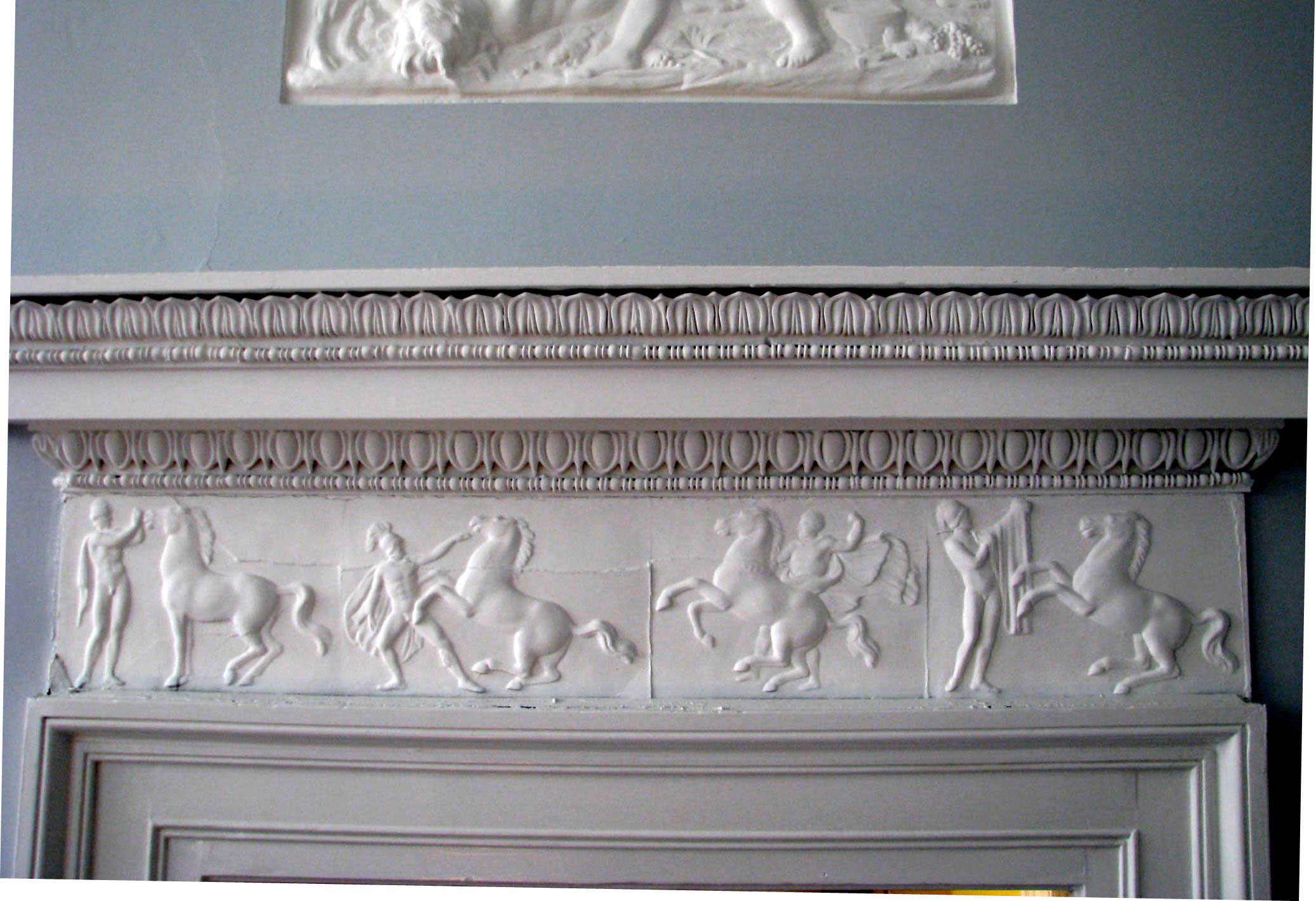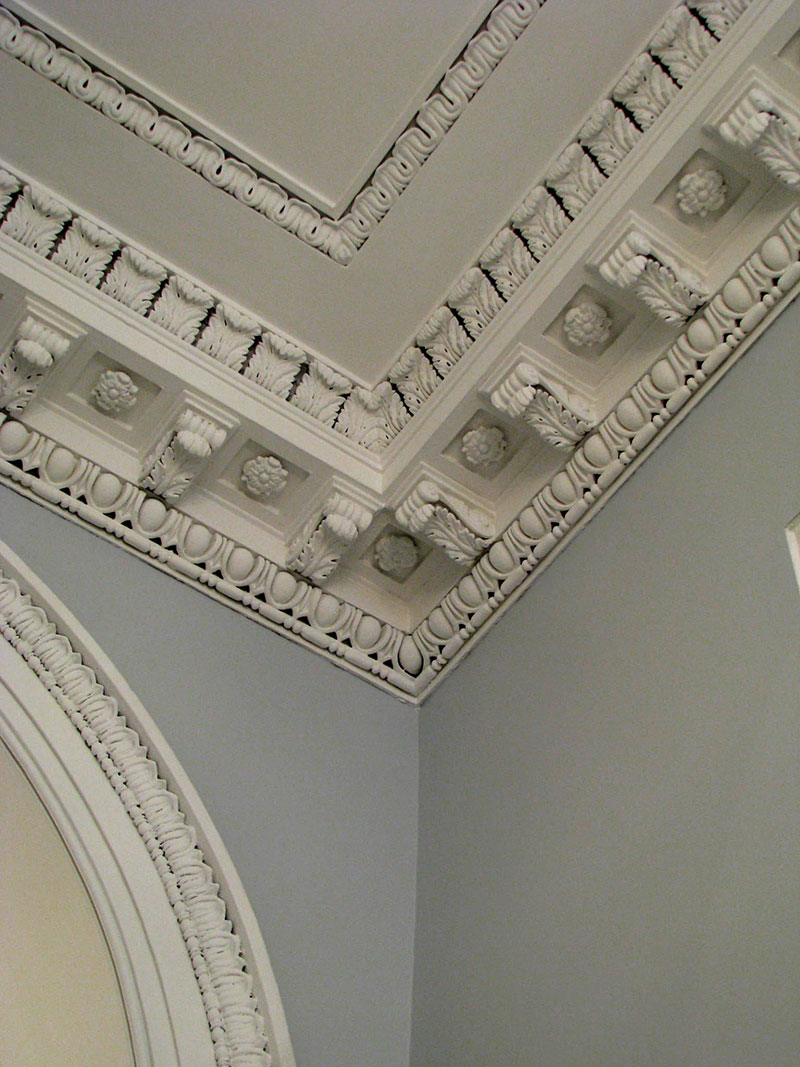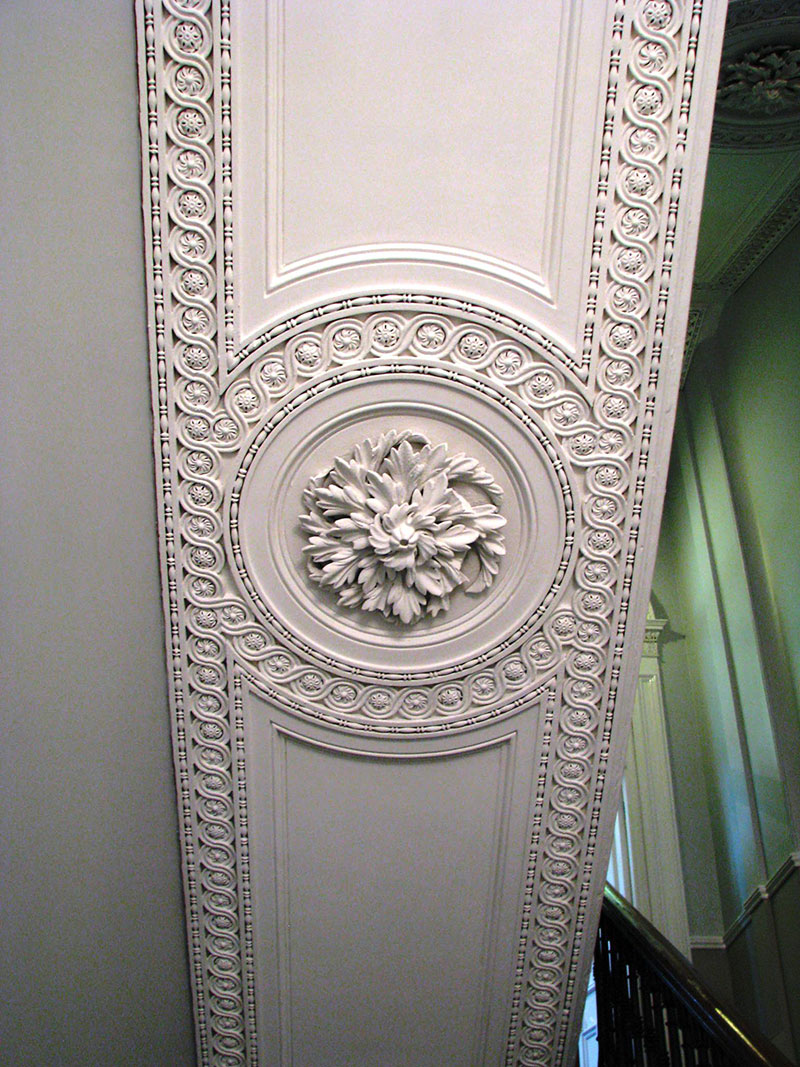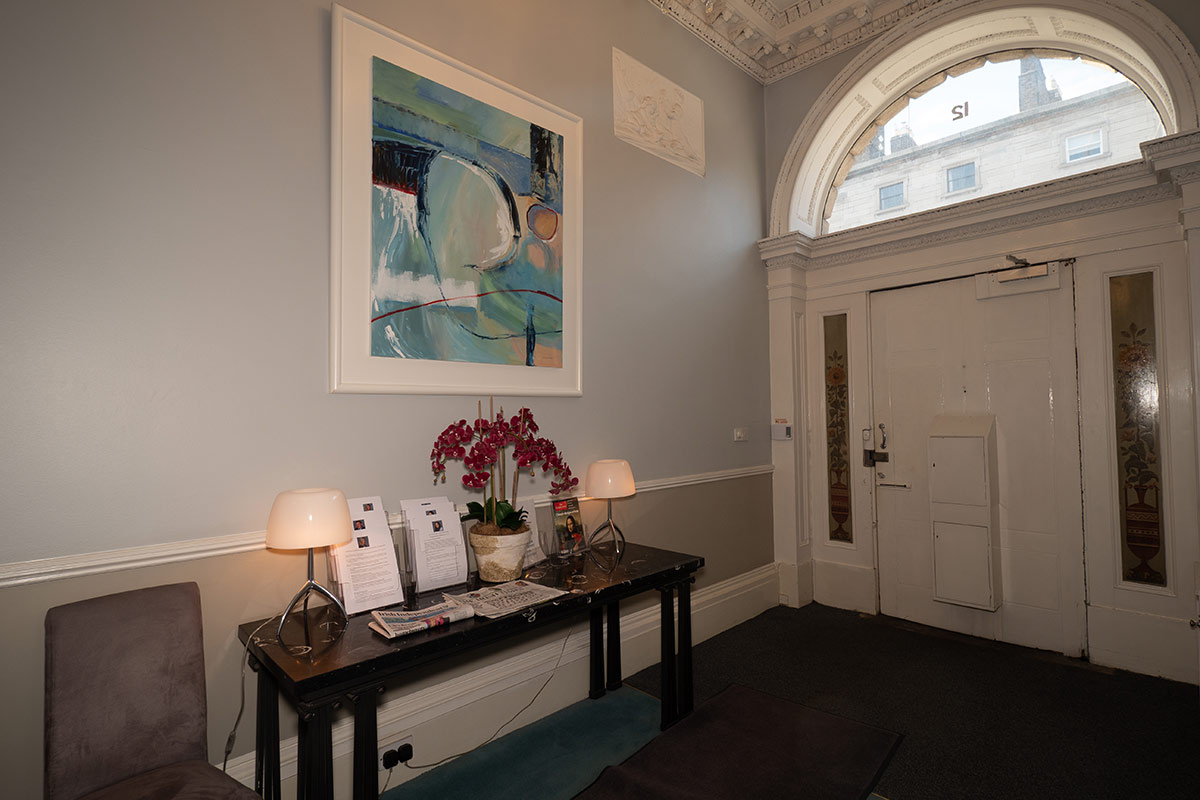
Plaster Panels at No. 12 Fitzwilliam Place, Dublin
The entrance hall of No12 Fitzwilliam Place is graced by four attractive plasterwork panels depicting the Four Seasons. These are placed high on the walls, two facing two, where they are effectively illuminated by the large fanlight over the front door.
The panels, cast in fairly high relief, show groups of putti — classical figures of small nude boys — playfully engaged in activities associated with each of the seasons.
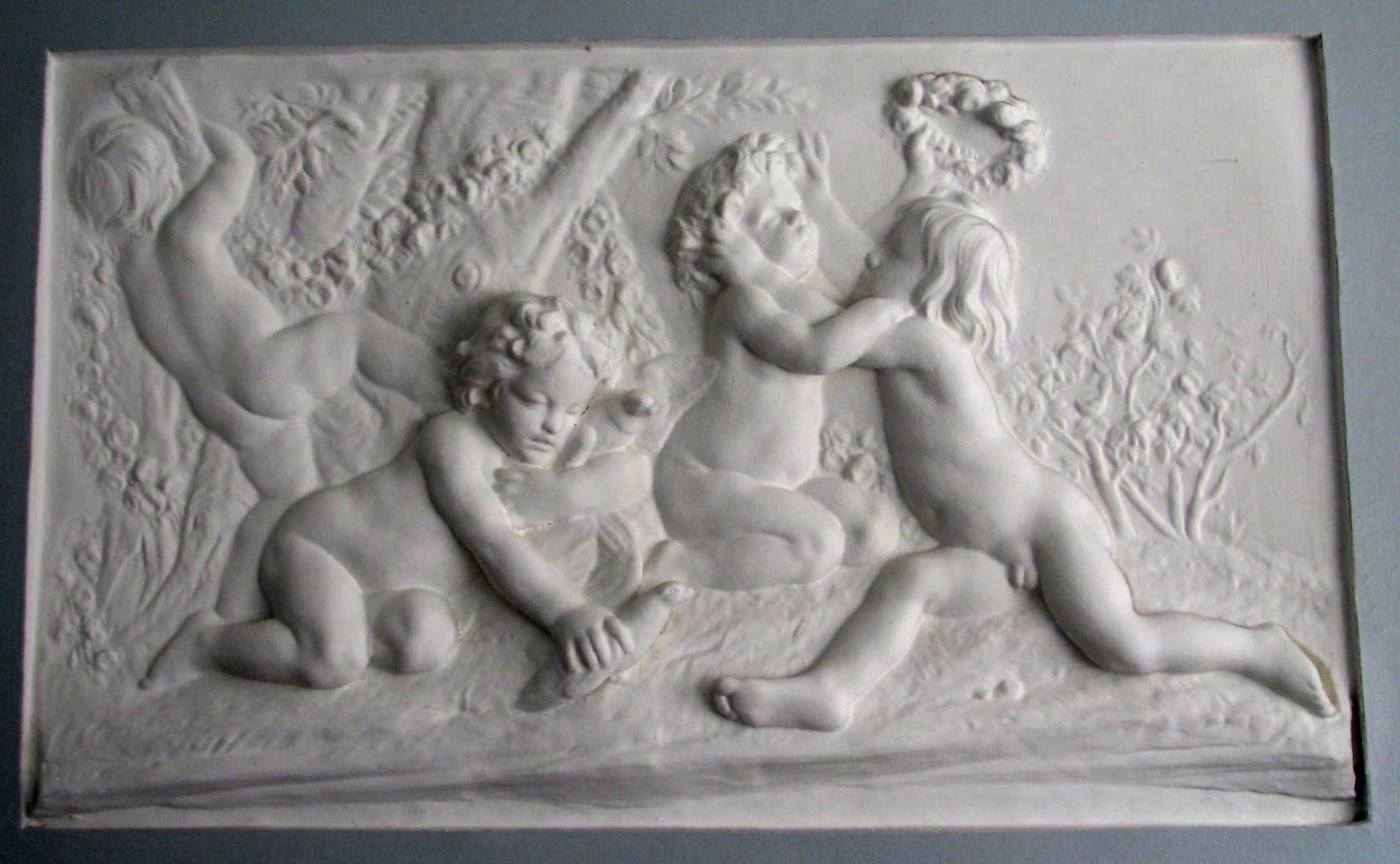
In the Spring panel, the putti are disporting themselves on a grassy mound. Two of them are playfully crowning each other with floral garlands made from the rich growth of spring flowers in the background. A third one plays with young newly-hatched birds, probably trying to help with first flying lessons! In the background a fourth putto climbs into a flower-covered tree in search of further seasonal diversions.
It is worth noting how the technique of relief carving and casting is nicely used here. The putti in the foreground are in high relief, with strong cast shadows, creating a sense of nearness, while the background figures and growth are in lower relief to give a sense of distance from the viewer, further emphasised by the overlapping of forms and shapes. These techniques are used very effectively in all four panels to create a feeling of depth within the relatively shallow panel — an ample space for the mischievous antics of the putti.
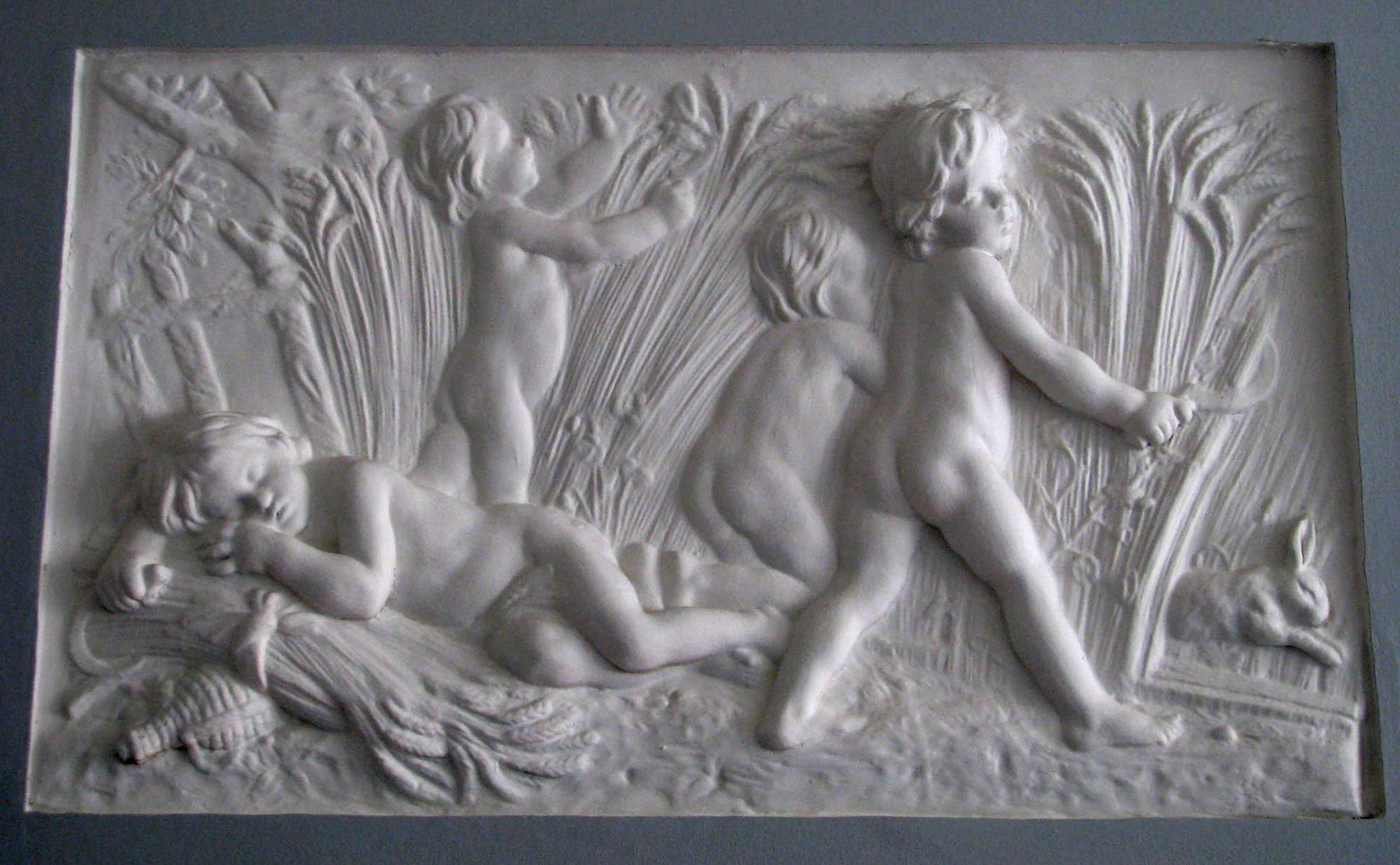
In the Summer panel, the action is taking place in a cornfield, where the putti are more seriously engaged in the harvesting of the summer’s gift of rich, ripe corn. Three of the little figures are fully involved in the work, wielding their sickles as they advance to the right through the waving stalks. In the left foreground, a fourth putto sleeps contentedly on a sheaf of corn, from under which an emptied wine flask protrudes. There is a sense of the heavy drowsiness of summer heat overcoming the scene.
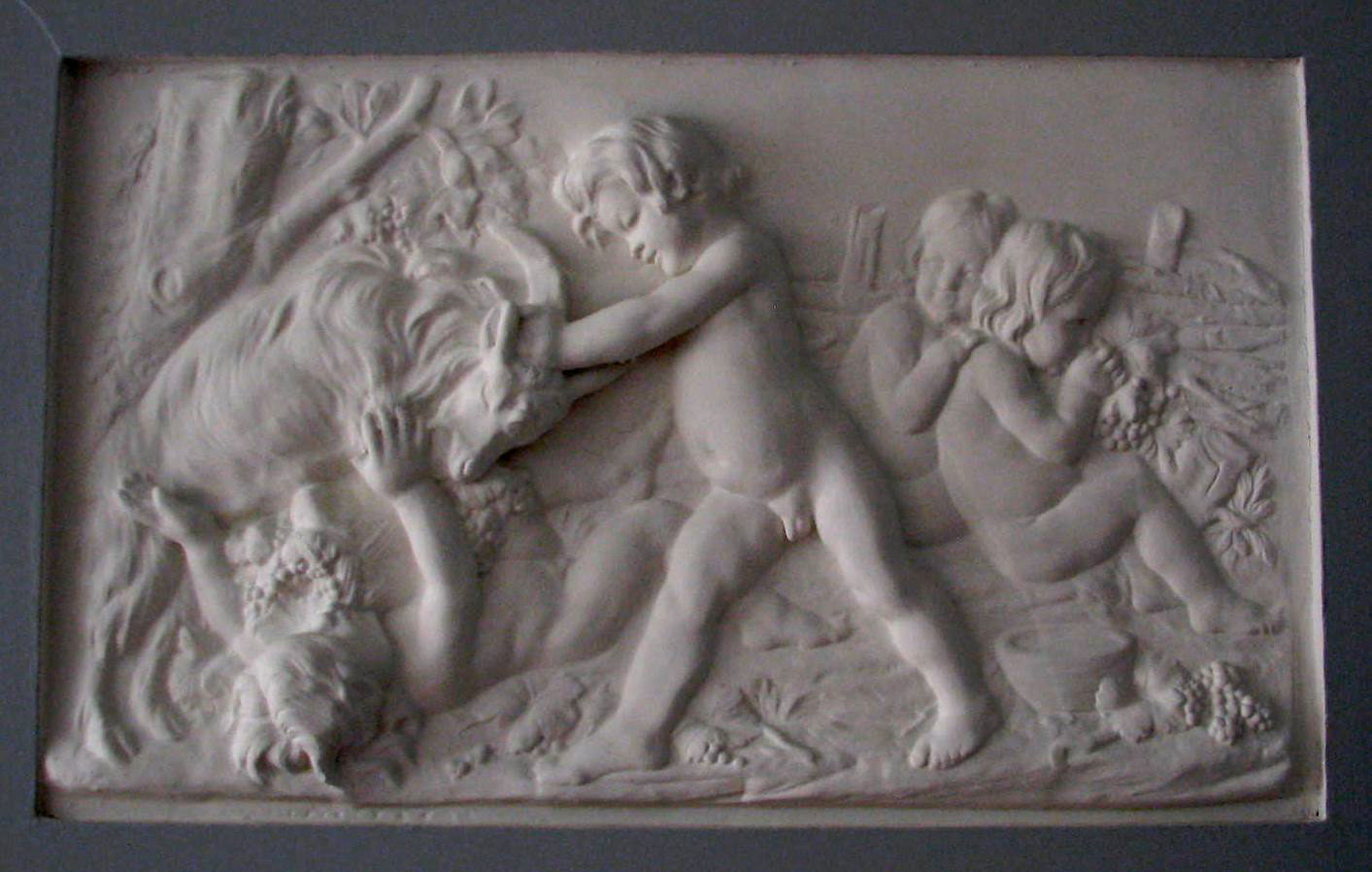
In the Autumn panel, the rich harvest of the vineyard is celebrated. The main action takes place in the left foreground, where two putti playfully wrestle with a lively goat over some bunches of grapes. One grapples with its horns to keep the goat from eating the grapes, while the other, knocked supine in the boisterous melee, tries to retrieve the precious fruits. In the right background, two more putti indulge in a feast of grape-eating, as they observe the playful tussle in the foreground. This, the most ‘action-packed’ of the four scenes, is cleverly rendered with economy of technique, the playful abandon in the foreground nicely in counterpoint with the more passive figures in the background. The bowl on the right may suggest the brimming wine-cup, while the frisky goat may symbolise the lively inebriation induced by the fruits of Autumn.
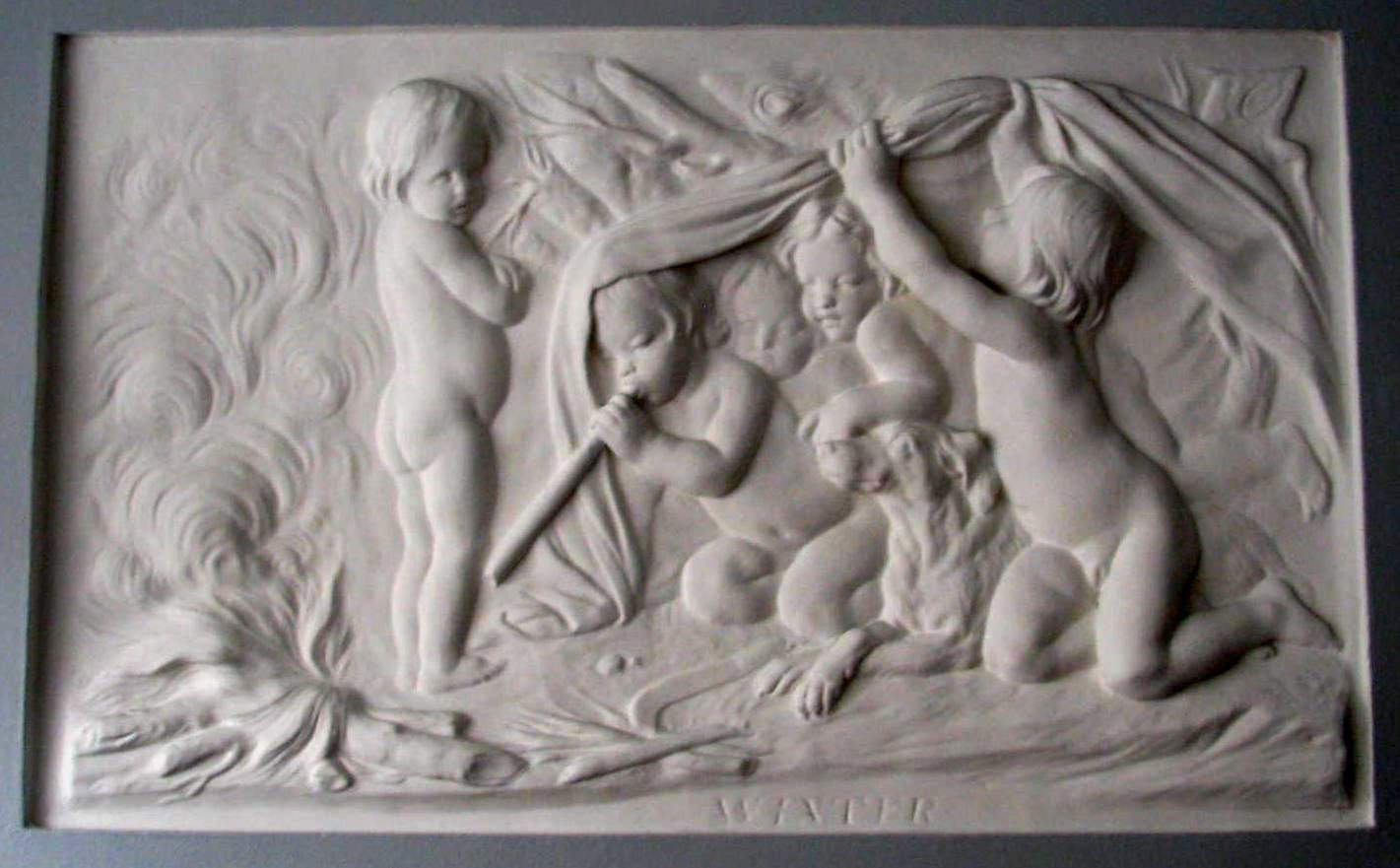
In the Winter panel, the resourcefulness of the little nude putti in keeping warm, despite the inclemency of the cold season, is charmingly expressed. On the left, one putto warms his back at the heat of a cheerful wood fire blown to flame by another, while two more peep out from the comfort of a sheltering cloth being drawn over them by a third. A contented dog, symbol of loyalty and friendship, with languidly crossed paws, shares with the putti both the warmth of the fire and the warmth of their companionship. The serenity of the dog acts as a simple balancing contrast to the busy concerns of the putti. The whole scene cleverly evokes the nature of winter’s cold by depicting the opposite — the warmth of fire and friendship.
Contexts
Although worthy of note in themselves, the Four Seasons panels in No 12 Fitzwilliam Place can be considered in the wider context of the house’s plasterwork decoration and also in that of the plasterwork tradition in Dublin. Built in 1820, probably as part of a group of three or four, No.12 is a fine example of the later Georgian style which emulated that of the nearby earlier Fitzwilliam Square. Christine Casey notes how there is a comparatively surprising richness of interior ornament found in these houses. No.12, as we see, is no exception, possessing some fine examples of classical-style overdoor friezes, richly worked cornices and stair hall ornamentation which not only further enhance the setting of the Four Seasons panels, but also emphasise the continuity of traditional decorative excellence established in eighteenth-century Dublin by such renowned stucco workers as the Lafrancini brothers and Michael Stapleton.
The pastoral theme of the Four Seasons is a well established European art-historical subject, reaching back through Baroque, Renaissance, Medieval and Classical art. Equally, the use of the high-spirited putti to enliven and enhance particular scenes owes its origins to the classical depictions of Eros and Cupid as mischievous little boys. This was later adopted by Renaissance, Baroque and Rococo artists such as Raphael, Rubens and Boucher. The classical themes of such art were ideal inspiration for the neoclassical stuccoists in search of decorative themes.
Our putti at No12 have, indeed, an auspicious lineage!

